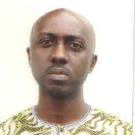
Petrus Nzerem
Work place: Petroleum and Gas Engineering Department, Nile University Nigeria
E-mail:
Website:
Research Interests: Engineering, Chemistry & Materials Science
Biography
Dr Petrus Nzerem, DOB: 19 May 1980; Universities attended, Federal University of Technology Owerri 1998 - 2004 (BEng Polymer and Textile Engineering). University of Leeds, 2005 - 2006 (MSc Energy and Environment) University of Manchester 2008 - 2013 Chemical Engineering and Analytical Science.
Author Articles
Absorption, Diffraction and Free Space Path Losses Modeling for the Terahertz Band
By Oluseun.D.Oyeleke Sadiq Thomas Olabode Idowu-Bismark Petrus Nzerem Idris Muhammad
DOI: https://doi.org/10.5815/ijem.2020.01.05, Pub. Date: 8 Feb. 2020
With the explosive increase in the data traffic of wireless communication systems and the scarcity of spectrum, terahertz (THz) frequency band is predicted as a hopeful contender to shore up ultra- broadband for the forthcoming beyond fifth generation (5G) communication system. THz frequency band is a bridge between millimeter wave (mmWave) and optical frequency bands. The contribution of this paper is to carry out an in-depth study of the THz channel impairments using mathematical models to evaluate the requirements for designing indoor THz communication systems at 300GHz. Atmospheric absorption loss, diffraction loss and free space path loss were investigated and modeled. Finally, we discuss several potential application scenarios of THz and the essential technical challenges that will be encountered in the future THz communications. Finally, the article finds that propagating in the THz spectrum is strongly dependent on antenna gain.
[...] Read more.Design and Construction of a Prototype Wireless Power Transfer Device
By Oluseun.D.Oyeleke Sadiq Thomas Petrus Nzerem GokhanKoyunlu
DOI: https://doi.org/10.5815/ijem.2019.02.02, Pub. Date: 8 Mar. 2019
This project is aimed at developing a prototype wireless charging system that allows for charging convenience using wireless charging also called inductive charging. This allows charging to be made easier and free from connecting leads between charger and handset.
In order to successfully achieve this task, the design of the prototype was developed in two parts, a transmitter with resonator and a receiver with resonator. The transmitter converts DC voltage to AC, and transfers energy wirelessly through an LC resonator to the receiver through mutual induction, and hence induces EMF in the receiver. The EMF is rectified, filtered and regulated and output is used to charge mobile phones.
Testing results and measurements taken on this prototype shows that significant amount of EMF can be induced at receiver through air coupled transformers due to EM waves at high frequencies. The charging distance is 3cm maximum with end-to-end coupling.
Other Articles
Subscribe to receive issue release notifications and newsletters from MECS Press journals